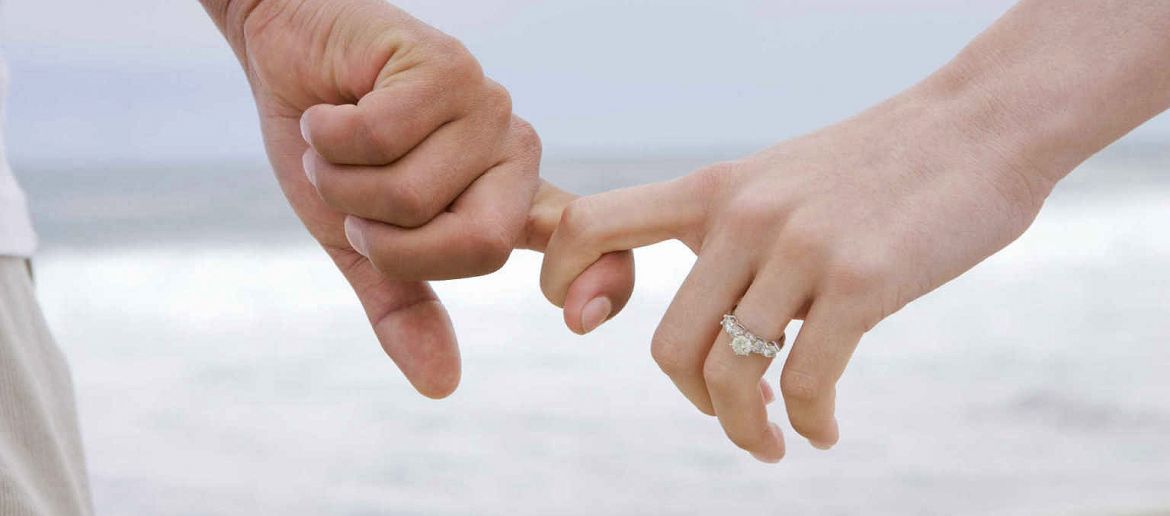
- Weddings
- No comments
Two left hands forming an outline of a heart shape. Both hands are wearing a wedding ring.
Before medical science discovered how the circulatory system functioned, people believed that a vein ran directly from the fourth finger on the left hand to the heart. Because of the hand-heart connection, they chose the descriptive name vena amoris, Latin for the vein of love, for this particular vein.
Based upon this name, their contemporaries, purported experts in the field of matrimonial etiquette, wrote that it would only be fitting that the wedding ring be worn on this finger. By wearing the ring on the fourth finger of the left hand, a married couple symbolically declares their eternal love for each other.
In Western cultures, a wedding ring is traditionally worn on the ring finger. This developed from the Roman “anulus pronubis” when the man gave a ring to the woman at the betrothal ceremony. Blessing the wedding ring and putting it on the bride’s finger dates from the 11th century. In medieval Europe, the Christian wedding ceremony placed the ring in sequence on the thumb, index, middle, and ring fingers of the left hand. The ring was then left on the ring finger.
In a few European countries, the ring is worn on the left hand prior to marriage, then is transferred to the right during the ceremony. For example, a Greek Orthodox bride wears the ring on the left hand prior to the ceremony, then moves it to the right hand after the wedding. In England, the 1549 Prayer Book declared “the ring shall be placed on the left hand”. By the 17th and 18th centuries the ring could be found on any finger after the ceremony — even on the thumb.
Left or right hand
In some Christian and non-Christian countries such as Austria, Bulgaria, Colombia, Denmark, Georgia, Germany, Greece, Hungary, India(mostly for men), Latvia, Lithuania, Netherlands, Norway, Poland, Russia, Serbia, Spain, Ukraine, and Venezuela the wedding ring is worn on the ring finger of the right hand.
In other countries, such as Australia, Botswana, Canada, Czech Republic, Egypt, Finland, France, Ireland, Italy, Jordan, Mexico, New Zealand, Romania, Slovenia, South Africa, Sweden, the UK, and the USA it is generally worn on the ring finger of the left hand. In Brazil and in Turkey, the ring is worn on the right hand until the actual wedding day, when it is exchanged to the left hand. In Croatia, wedding rings are commonly worn on either hand.
